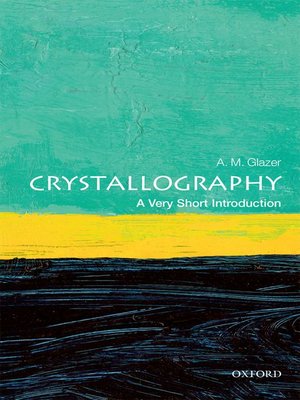
Sign up to save your library
With an OverDrive account, you can save your favorite libraries for at-a-glance information about availability. Find out more about OverDrive accounts.
Find this title in Libby, the library reading app by OverDrive.



Search for a digital library with this title
Title found at these libraries:
| Library Name | Distance |
|---|---|
| Loading... |
Crystals have fascinated us for centuries with their beauty and symmetry, and have often been invested with magical powers. The use of X-ray diffraction, first pioneered in 1912 by father and son William and Lawrence Bragg, enabled us to probe the structure of molecules, and heralded the scientific study of crystals, leading to an understanding of their atomic arrangements at a fundamental level. The new discipline, called X-ray crystallography, has subsequently evolved into a formidable science that underpins many other scientific areas. Starting from the determination of the structures of very simple crystals, such as that of common salt, today it has become almost routine to determine the positions of tens of thousands of atoms in a crystal. In this Very Short Introduction Mike Glazer shows how the discoveries in crystallography have been applied to the creation of new and important materials, to drugs and pharmaceuticals and to our understanding of genetics, cell biology, proteins, and viruses. Tracing the history of crystallography, he analyses astonishing developments in new sources of X-rays, as well as of neutrons, and in electron microscopy, and considers the impact they have on the study of crystals today. ABOUT THE SERIES: The Very Short Introductions series from Oxford University Press contains hundreds of titles in almost every subject area. These pocket-sized books are the perfect way to get ahead in a new subject quickly. Our expert authors combine facts, analysis, perspective, new ideas, and enthusiasm to make interesting and challenging topics highly readable.







